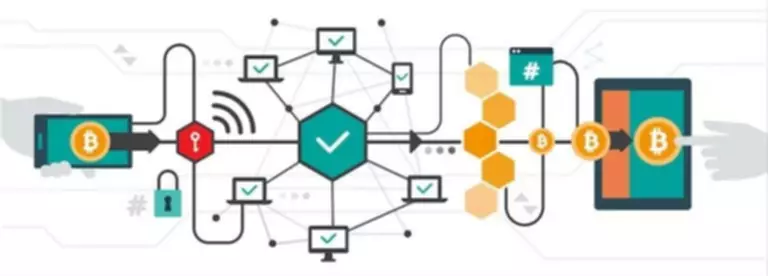December 12, 2021 |
James Messi
Over the recent years, particularly during the height of the COVID-19 pandemic, the cryptocurrency sector has gained popularity even among more conservative investors. The air of economic uncertainty fostered by the pandemic underscored the security that the cryptocurrency sector offers. The sector’s appeal to people’s need for financial security, combined with pandemic restrictions that left little room for anything but online transactions, opened the door to a new and broader user base.
Individuals, private institutions, and businesses have begun investing in digital currencies and dabbling in non-fungible tokens (NFTs). Decentralized finance (Defi) had also picked up, with several well-known universities offering courses teaching about the concept. The general public’s involvement with the crypto sector can now be seen not only in mainstream media but in legislation as well, as evident in the U.S. Infrastructure Bill.
Despite being a boon for the crypto sector, the influx of new users also led to an inevitable problem: the inability of blockchains to scale with a large number of users and their transactions.
As of writing, Ethereum can process around 13 transactions per second, while Bitcoin does about 7. These figures pale in comparison to Paypal’s 193 transactions per second and Visa’s 1,667 in terms of payment processing.
The inability of Ethereum’s blockchain technology to scale with a large number of user transactions causes traffic congestion in the network. In turn, this congestion drives up the cost of gas fees in the network, which may become a turn-off for users who do not want to shell out around $40 for executing a single transaction.
Such is the severity of the blockchain’s scaling problem that even Vitalik Buterin acknowledged it, noting the unsustainability of the existing throughput and fee system for the network’s goal of having NFT-powered social network projects thrive on Ethereum.
To this end, Ethereum plans to implement a shift from a Proof of Work to a Proof of Stake consensus algorithm, forecasted to boost the network’s transaction speed from a meager 13 transactions per second to a whopping 100,000 in the roll-out of Ethereum 2.0. But until this plan is actualized, the network will have to look for other ways to address its scaling problem.
The Root of the Problem
Both Bitcoin and Ethereum’s scaling problems arose from the two network’s infrastructural design, which sacrificed scalability for complete decentralization and security. To ensure the validity of each transaction made in the network without relying on intermediaries, each node in Ethereum’s network compares the transaction to an accurate copy of the current network state. Thus, increased transactions mean an increased workload for every node in the network, further taxing node operators who have already incurred high costs in purchasing and maintaining their equipment.
An Unavailable Avenue
While other blockchains have circumvented the scaling dilemma by simply incorporating the scalability in their infrastructures as they build blockchains from scratch, this solution does not apply to Bitcoin or Ethereum’s blockchains.
The two leading digital currencies’ blockchain infrastructures were already in place before the scalability dilemma arose. This setup complicated the situation for the blockchains as the integration of scalability from scratch would mean a complete overhaul of existing systems.
Although this might be a feasible idea for a relatively minor blockchain, the sheer size of Ethereum’s network renders this solution unadvisable. Considering the size of just Ethereum’s blockchain economy alone, with a market capitalization value of around $495 billion and an ETH to USD exchange rate of 1:4,362.50, repackaging it entirely into another separate system would come with more than a few risks and complications.
This need for scalability without going through a complete overhaul is where the layer-two solution comes in.
An Alternate Route

Acknowledging the difficulty of improving the scalability of existing massive networks without sacrificing decentralization or security, Ethereum has resorted to using the layer-two solution to decongest network traffic.
Layer-2 is blockchain technology’s “off-chain” solution to the scalability problem. The technology’s primary purpose is to carry out all transactions and scalable payment off-chain or outside the blockchain’s network. Carrying out transactions and payments outside the main network allowed Ethereum to scale its blockchain transaction capacity and retain the decentralized benefits of a distributed protocol.
Despite the off-chain transactions, the blockchain network, which now serves as Layer-1, is still the final storage of completed transactions and the arbiter if disputes arise.
The adoption of Layer-2 technology allows networks to get around the limitations of decentralized blockchains. Layer-2 has so far proven to be an effective method of decreasing network traffic and speeding up transactions.
Polygon, the Layer-2 scaling solution formerly called Matic, has gained a lot of recognition as ideal for applications on the Ethereum network looking to create a scalable platform without being encumbered with network congestion. Sushi, the Polygon version of SushiSwap, has seen a 75% rise in the number of its users in September’s first week, according to DappRadar.
By reducing network congestion, Layer-2 also effectively cuts down on users’ gas fees. The reduction in transaction fees may have piqued the interest of the NFT market, which has begun to migrate to Layer-2. The NFT market reportedly moved to a Layer-2 solution that saves more than $400,000 in transaction fees just 24 hours after launch.
One example of an NFT market that shifted to a Layer-2 solution is OpenSea, the first and largest peer-to-peer marketplace for NFTs and other digital items and collectibles. OpenSea announced its integration with Polygon in July to allow gas-free trades on its marketplace.
It is worth noting that Polygon is not the only Layer-2 solution catching the attention of blockchains. Other notable Layer-2 infrastructures that are presently gaining traction are Celer Network and Arbitrum.
The emergence of Layer-2 solutions as an answer to the congestion problems may hint at developers’ preference for Layer-2 as the ideal infrastructure in creating top-of-the-line blockchain applications.
However, the current environment may yet change again when Ethereum finally gets around to implementing Ethereum 2.0.